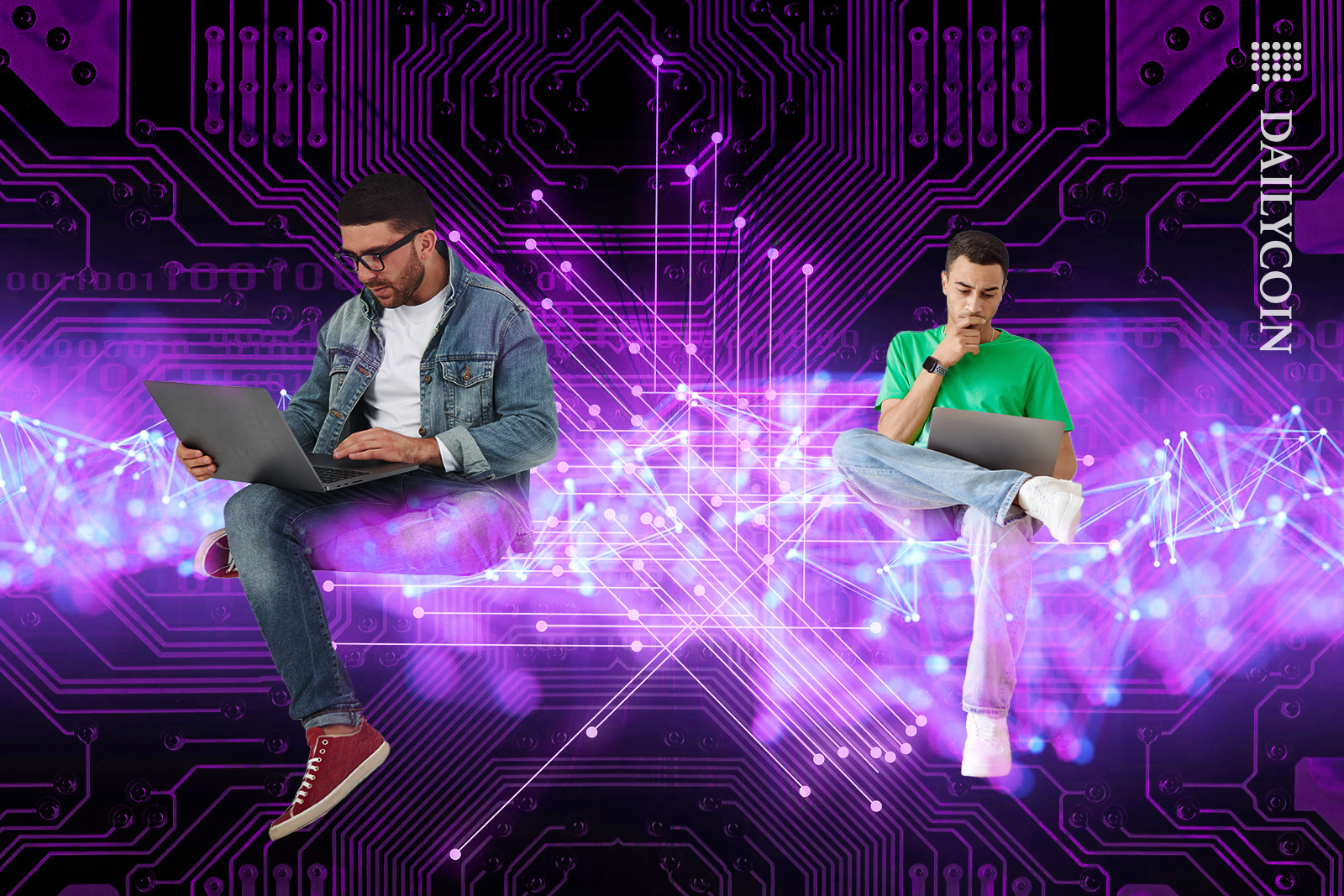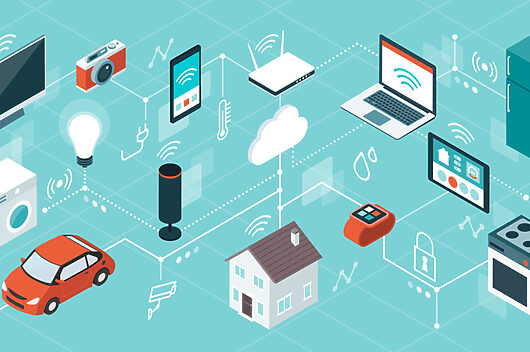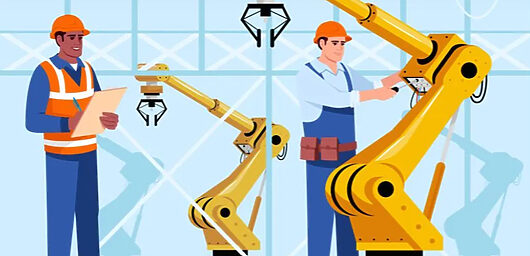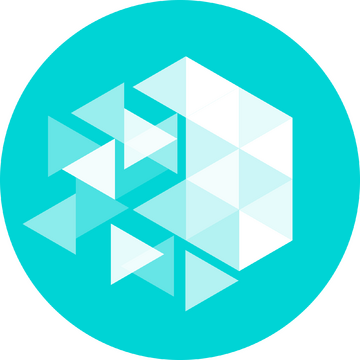
The Internet of Things and blockchain are the new trendy buzzwords making waves in Big Tech. These exciting and often misunderstood concepts aim to streamline our lives. They promise to make everything we do faster, easier, and safer.
But how exactly do these novel and jargon-heavy technologies overlap to improve my quality of life? My alarm clock automatically tells my coffee machine to start brewing the second I wake up, but why does sending that message on a blockchain network make any difference?
It seems like an unnecessary extra layer of complexity to a simple morning ritual. Still, the implementation of blockchain technology might be the thing that brings true security to IoT data.
Sponsored
If you’ve ever felt that IoT technologies and smart devices like Amazon Alexa or Google Home are a data security risks that are listening to your conversations, read on.
Table of contents
What is the Internet of Things (IoT)
The Internet of Things, or IoT, is a revolutionary concept steadily transforming our world. It refers to the vast network of physical devices – from everyday household items like refrigerators and thermostats to industrial machinery – that are connected to the internet, collecting and sharing data.

This digital ecosystem breathes life and connectivity into everyday objects, enabling them to interact with us and each other.
Sponsored
Imagine your refrigerator automatically updating the grocery list in your Notes app when you run out of milk, or your office equipment booking a maintenance check in your calendar. IoT and automation transform the objects we use daily into smart, responsive tools that remove unnecessary friction from our lives.
Benefits of the Internet of Things
The Internet of Things offers a wealth of benefits that are reshaping various aspects of both everyday life and business processes.
Efficiency and Productivity
The first benefit that springs to mind, Internet of Things devices automate and streamline routine tasks, leading to significant improvements in efficiency and productivity. For instance, data exchange between connected devices saves time and administrative hours, giving businesses greater resources.
Real-time Monitoring and Decision Making
An IoT ecosystem collects and analyzes data in real time, providing valuable insights that can aid in swift and informed decision-making. This is particularly useful in industries such as manufacturing, where IoT sensors can monitor equipment and predict failures before they occur.
Improved Quality of Life
That’s right, IoT even has the potential to enhance our quality of life. Smart homes can learn our habits and preferences, adjusting lighting, temperature, and music based on our routines and mood.
Enhanced Safety and Security
The Internet of Things can also contribute to safety and security. For example, IoT-enabled smart security systems can detect unusual activity and send alerts to your phone. At the same time, wearable devices can monitor health parameters and alert medical services in an emergency.
Problems with the Internet of Things

Despite the numerous benefits of the Internet of Things , it’s not without its challenges. There are a few issues that IoT providers need to consider.
Cybersecurity
With the increasing number of connected devices, cyber-attacks are even more threatening. IoT devices can have hacking vulnerabilities, potentially leading to security issues like breaches and manipulated data integrity. To give you a scary example, a compromised smart lock could allow unauthorized access control to your home.
Scalability
As the Internet of Things ecosystem expands, managing a large number of devices and the data they generate becomes a significant challenge. Ensuring that systems can effectively handle this growth without performance degradation is crucial.
Centralization
Many IoT networks rely on a centralized model, sending data from various devices to a central server for processing. This can create bottlenecks and single points of failure, making the system vulnerable to attacks or technical issues.
Many Internet of Things platforms use artificial intelligence and machine learning algorithms. If centralized bodies train these AI software platforms, can you really trust that they’re giving unbiased answers? Imagine you have a sore tooth, but your IoT ecosystem only recommends healthcare products from one company and ignores all other potential remedies.
Fortunately, blockchain and distributed ledger technology offer promising solutions to these issues.
How Blockchain Technology Solves IoT Issues
Blockchain technology, the backbone of cryptocurrencies like Bitcoin (BTC), is showing its hand as a potential solution to the challenges faced by the Internet of Things. Here’s how:
- Enhanced Security – Blockchain’s decentralized nature and use of cryptography significantly bolsters IoT security. Each transaction on a blockchain is recorded on a distributed ledger. Traceability and validation are enforced by multiple nodes in the network, making it extremely difficult for hackers and cybercriminals to alter or falsify data.
- Decentralization – Unlike traditional Internet of Things models that rely on a central server, blockchains like Ethereum (ETH) operate on a peer-to-peer network. This decentralization eliminates single points of failure and can improve the scalability and efficiency of IoT systems.
- Trust and Transparency – One of the main benefits of blockchain is its immutable and transparent nature, which helps to foster trust among users. Every transaction is recorded and can be traced back, providing a reliable audit trail. This can be particularly useful in IoT applications like supply chain management, where tracking the movement and authenticity of goods is crucial.
- Smart Contracts – Blockchain enables the use of smart contracts – self-executing contracts with the terms of the agreement directly written into code. Within an IoT ecosystem, smart contracts automate processes, such as a smart fridge automatically placing an order when it detects that you’re running low on milk.
Real World Use Cases of IoT Applications and Blockchain Platforms
The fusion of IoT and blockchain is opening up a world of possibilities across various sectors. Which industries are already placed to reap the benefits of this high-tech combo?
Supply Chain and Logistics

The combination of IoT and blockchain revolutionize supply chain management. IoT sensors can track goods in real time, providing data on location, temperature, humidity, and more. This data can be recorded on a blockchain, providing an immutable and transparent record that can help verify authenticity, ensure quality, and prevent fraud.
This is crucial in the food industry, where tracking produces from farm to table ensures freshness and prevents foodborne illnesses.
Healthcare

In healthcare, IoT devices like wearable sensors can monitor patient health parameters in real time. This sensor data can be stored on a blockchain, ensuring security, privacy, and easy access by authorized personnel. This can enhance patient care, enable remote monitoring, and even facilitate research by providing reliable health data.
Operational Maintenance and Data Logging

IoT sensors can monitor equipment performance and predict maintenance needs in industries like manufacturing or aviation. When recorded on a blockchain, this data can provide a tamper-proof maintenance log, ensuring accountability and aiding in regulatory compliance.
Examples of Internet of Things Blockchain Projects
The intersection of IoT and blockchain has given birth to several innovative projects in these emerging sectors. Here are a few notable examples:
1. Helium (HNT)

Helium is a decentralized wireless network that allows IoT devices to communicate and send data across its blockchain-based network using low-cost, low-power gateways like microchips and internet routers.
These gateways provide network coverage for IoT devices to connect to the internet and validate transactions on the Helium Internet of Things blockchain. Helium completed its migration to Solana in April 2023.
2. IOTA (MIOTA)

IOTA is a distributed ledger designed specifically for the Internet of Things. It uses a unique architecture called the Tangle, which allows for feeless and scalable transactions, making it suitable for microtransactions between IoT devices. IOTA envisions a future where every electronic device is connected to this network, enabling the exchange of data and value seamlessly.
3. IoTeX (IOTX)

IoTeX is an IoT blockchain focused on privacy and scalability. It allows IoT devices to interact with each other in a secure and trustworthy environment. The IoTeX network is also EVM compatible (Ethereum Virtual Machine) and developing its own ecosystem of DeFi apps and products.
Pros and Cons of Combining Blockchain and IoT
While integrating blockchain and the IoT holds immense potential, it’s not without its challenges. Let’s recap the pros and cons of the Internet of Things and blockchain.
Pros
- Enhanced Security -Blockchain’s decentralized and immutable nature improves IoT network security, making them less vulnerable to hacks and data breaches.
- Improved Transparency and Trust – Blockchain provides a transparent and immutable record of all transactions, fostering trust among users and stakeholders.
- Efficient and Automated Processes – Smart contracts can automate various processes in an IoT network, improving efficiency and reducing the need for intermediaries.
Cons
- Scalability Issues – As the number of IoT devices grows, ensuring that blockchain networks can effectively handle the increasing volume of transactions is a barrier, especially considering Ethereum gas fees.
- Complexity and Technical Challenges – Both blockchain and IoT involve complex technical challenges, including data privacy, consensus mechanisms, and interoperability between different systems.
- Regulatory and Legal Uncertainties – The regulatory landscape for technologies like blockchain and IoT is still evolving, and legal uncertainties challenge their wider adoption.
On the Flipside
- Not all IoT ecosystem providers want to use decentralized networks for their products. Just because public blockchains are popular in Web 3, that doesn’t mean that corporate bodies will want to use them. Reputable companies like IBM have already deployed their own private blockchains for businesses.
Why This Matters
The Internet of Things and blockchain are both complex emerging technologies. Knowing how they work and what their capabilities and limitations are will help you make educated and informed decisions in a crypto market that is largely speculative.
FAQs
The largest and most well-known Internet of Things blockchain projects are Helium, IOTA, and IoTeX.
IoT refers to a network of interconnected devices that communicate with each other. On the other hand, a blockchain is a decentralized peer-to-peer network used to store and transfer cryptocurrency, digital assets, and data.
IoT blockchains can offer greater security, scalability, and decentralization than regular Internet of Things ecosystems.
